





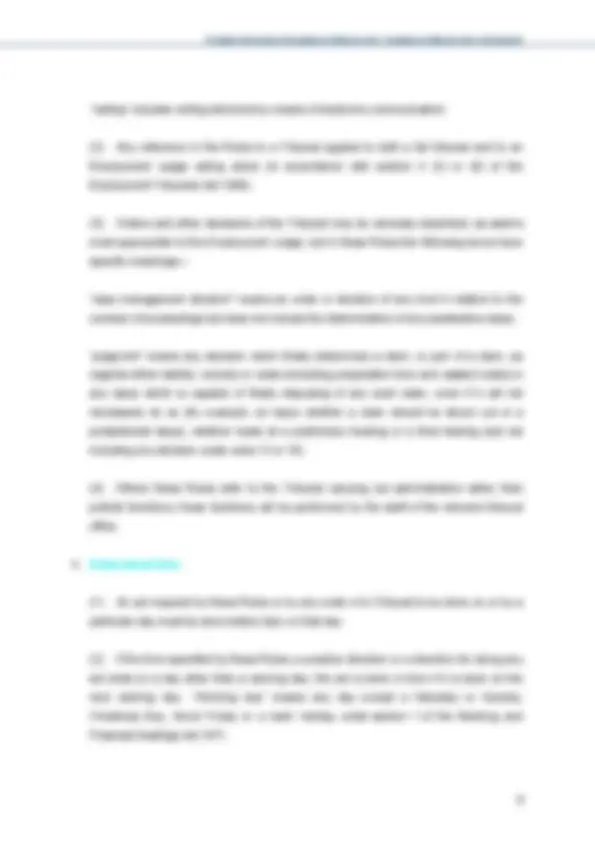
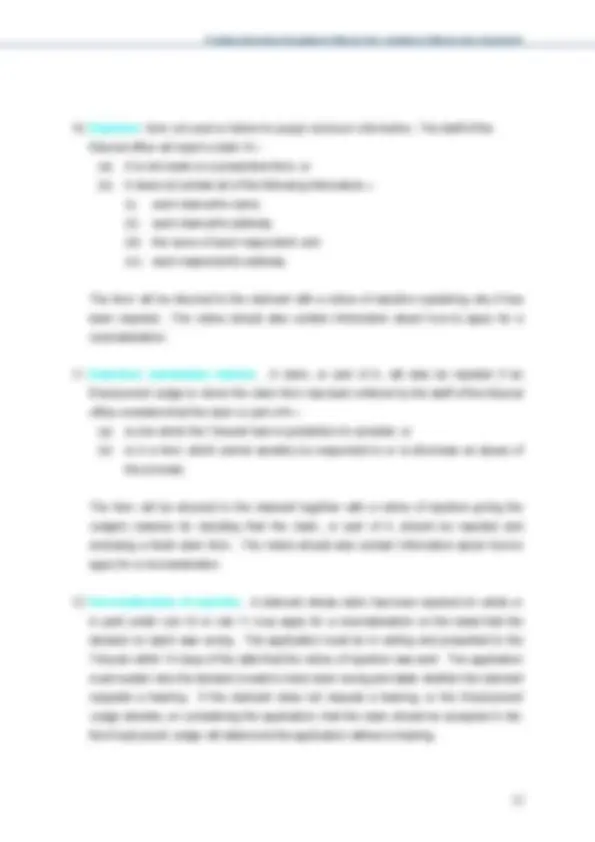
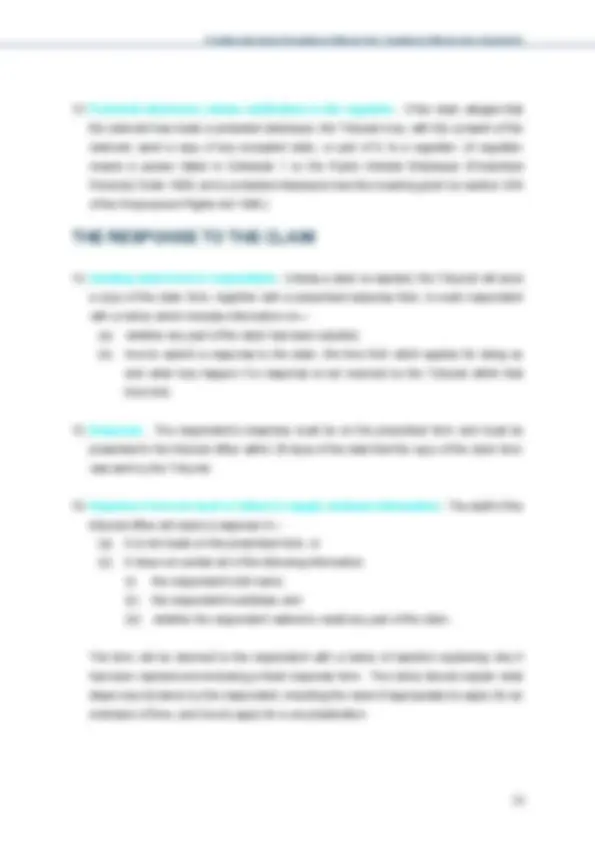
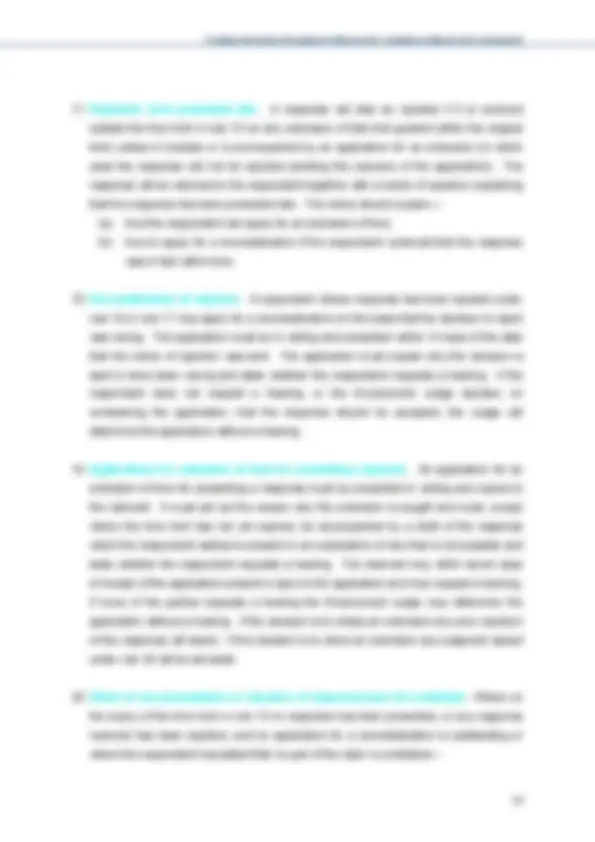
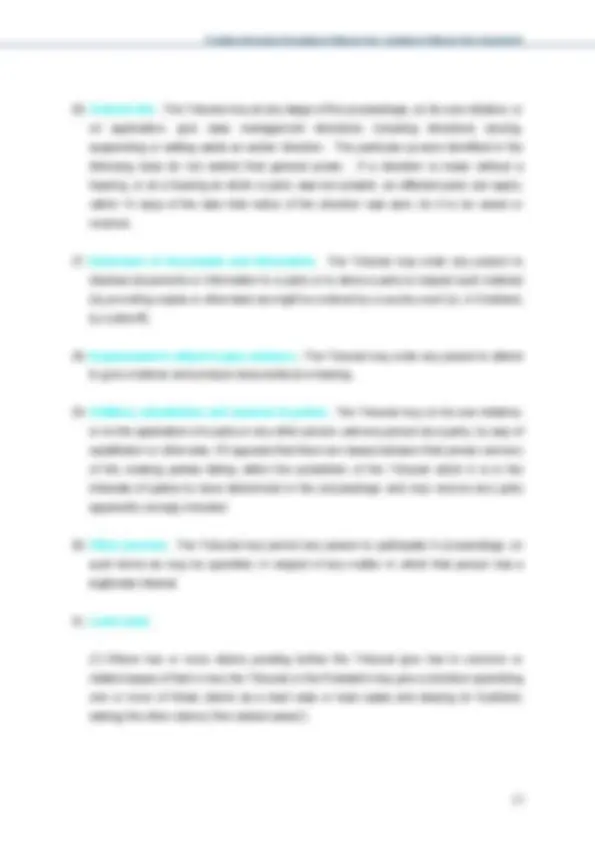
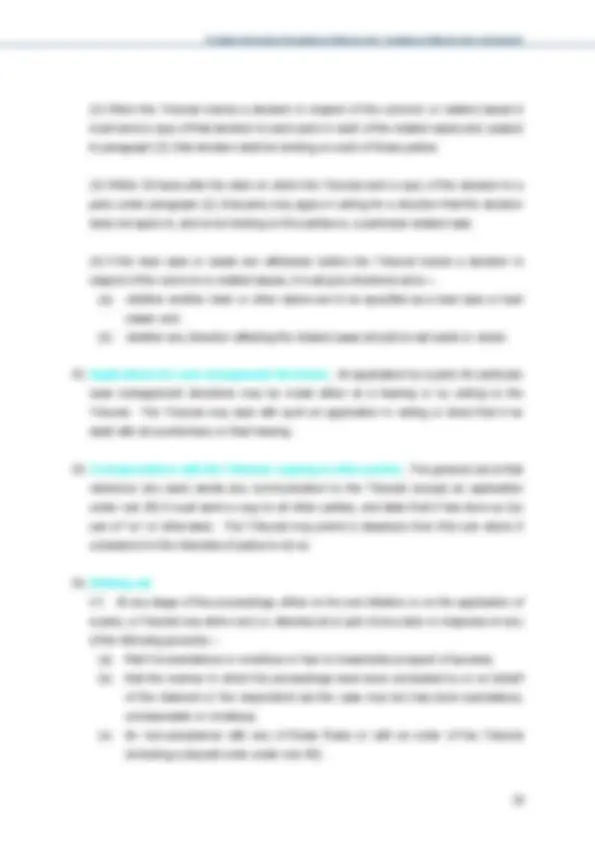
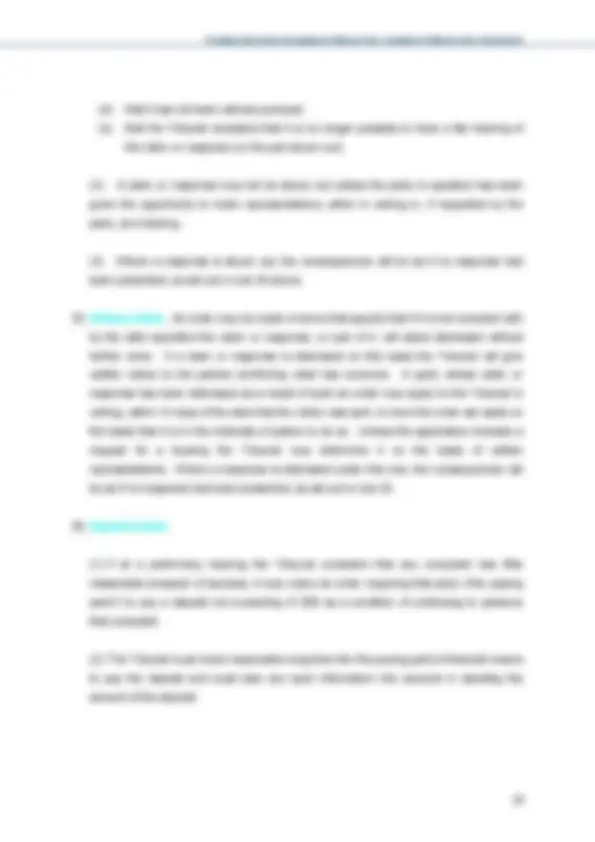
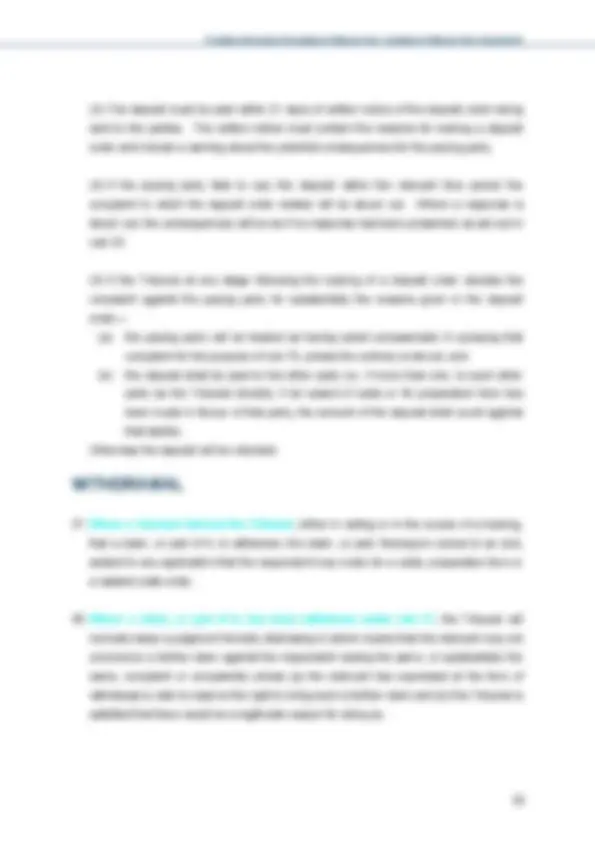
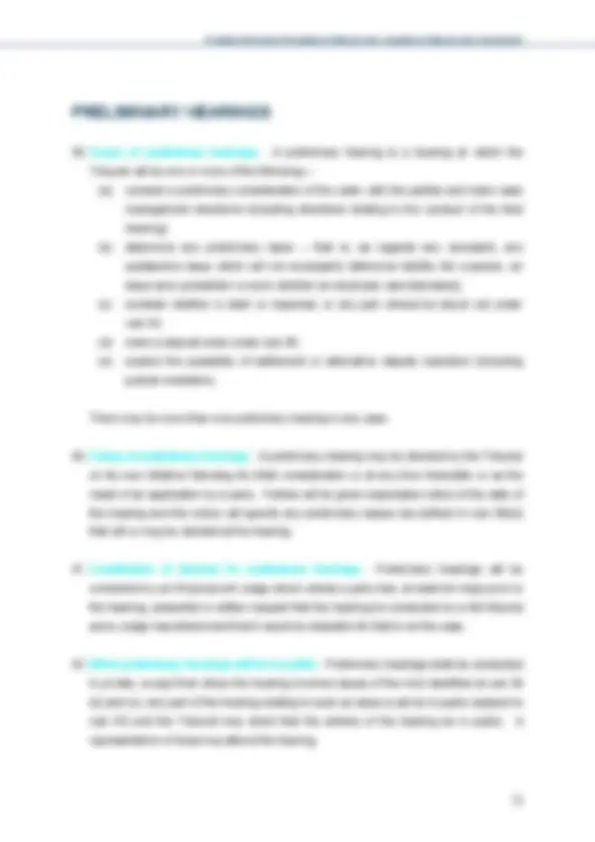
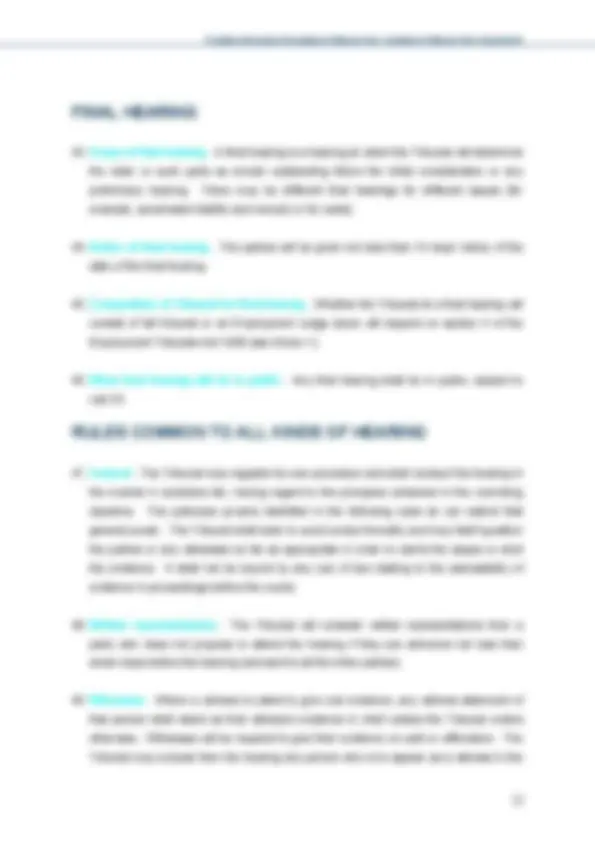
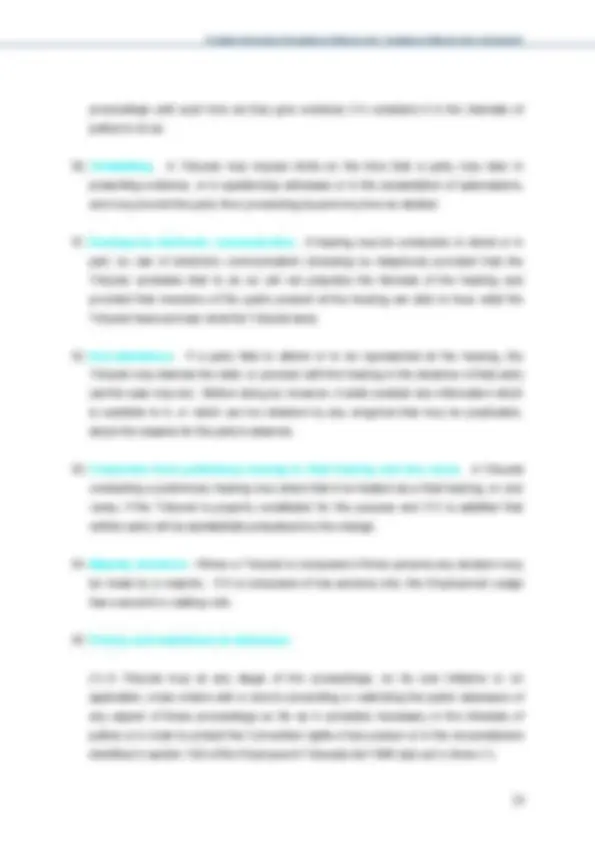
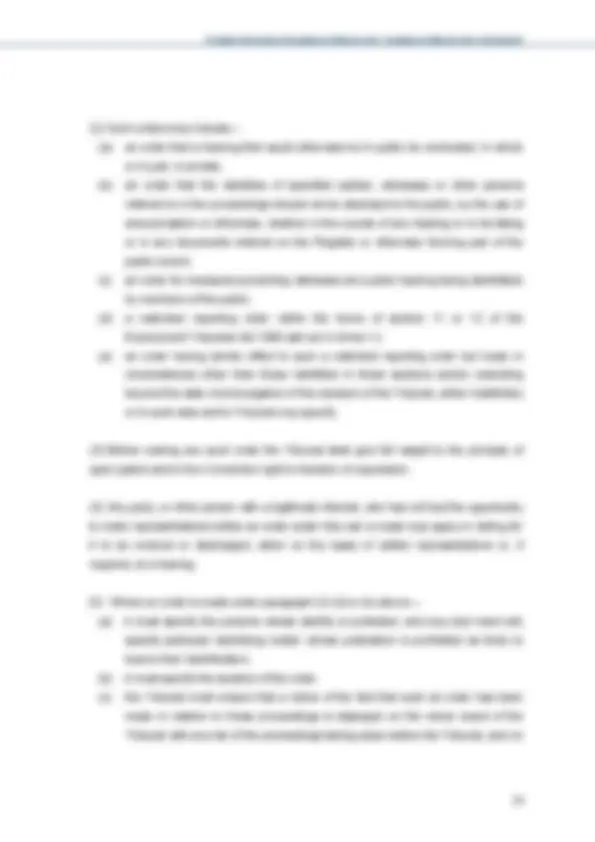
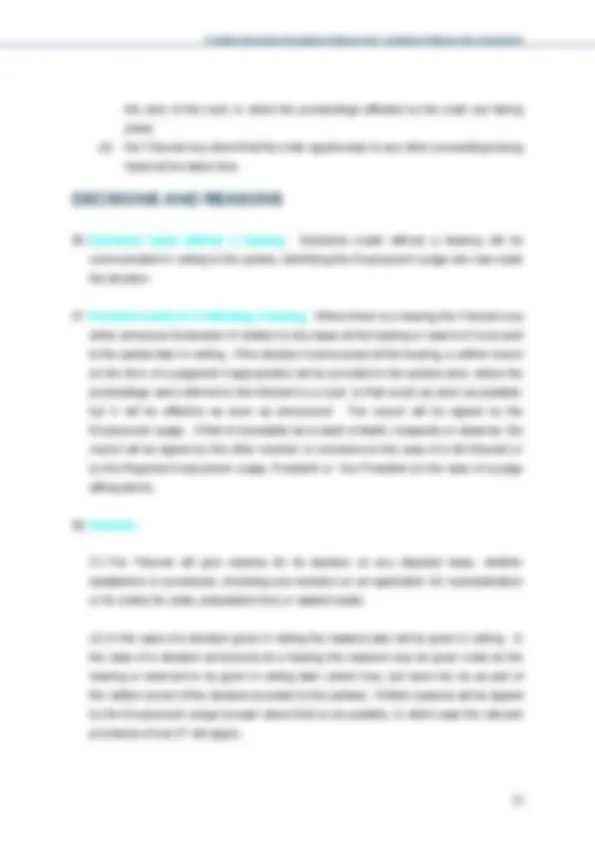

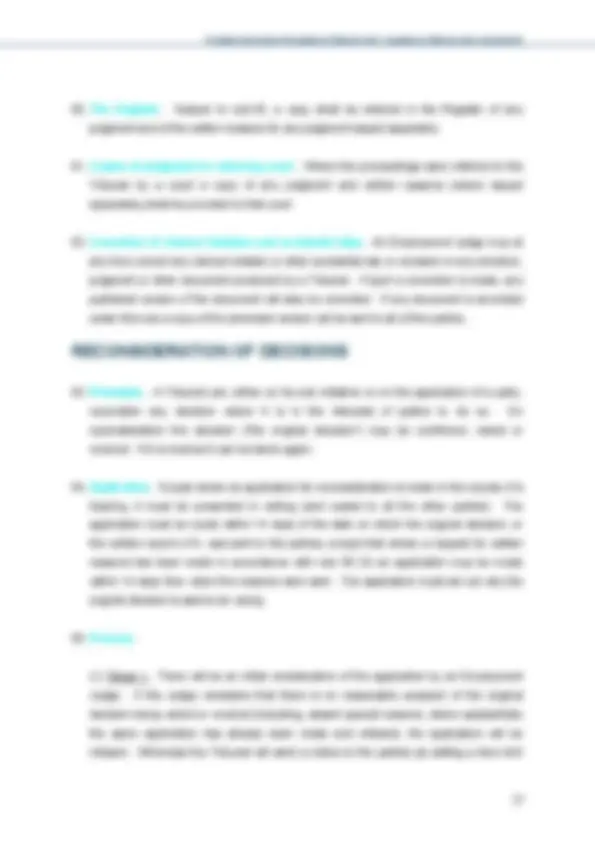
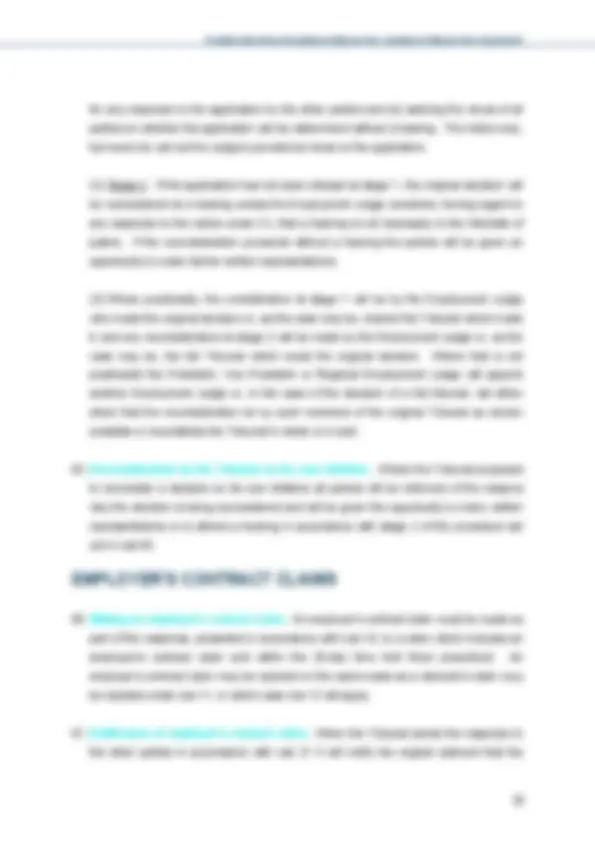
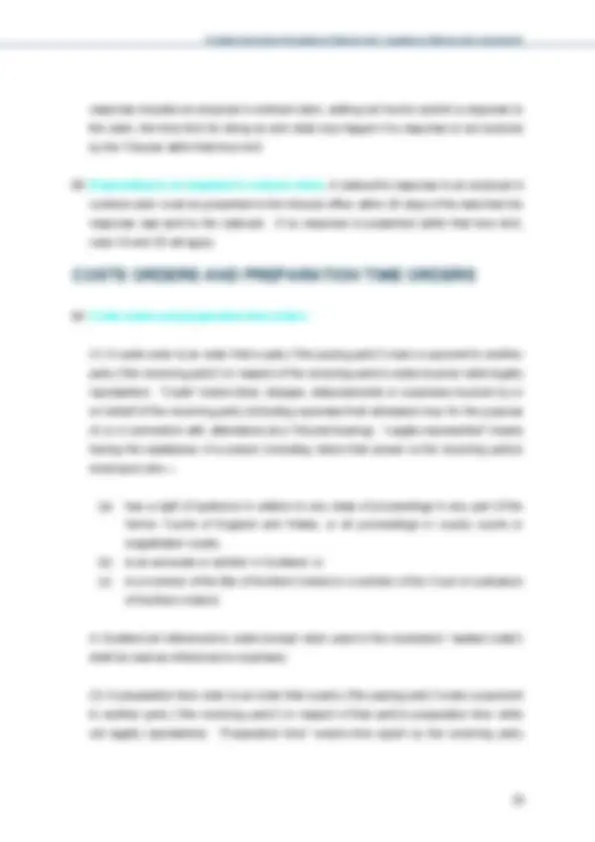
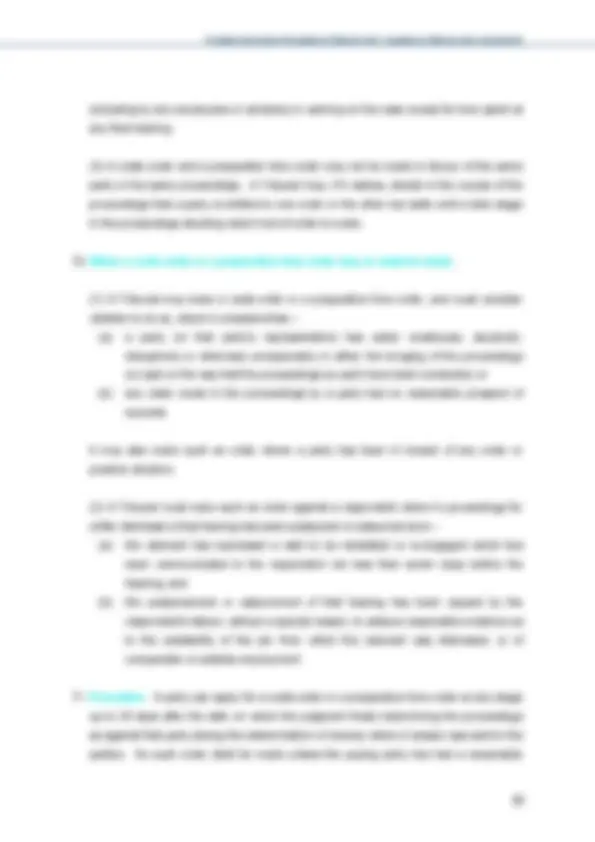
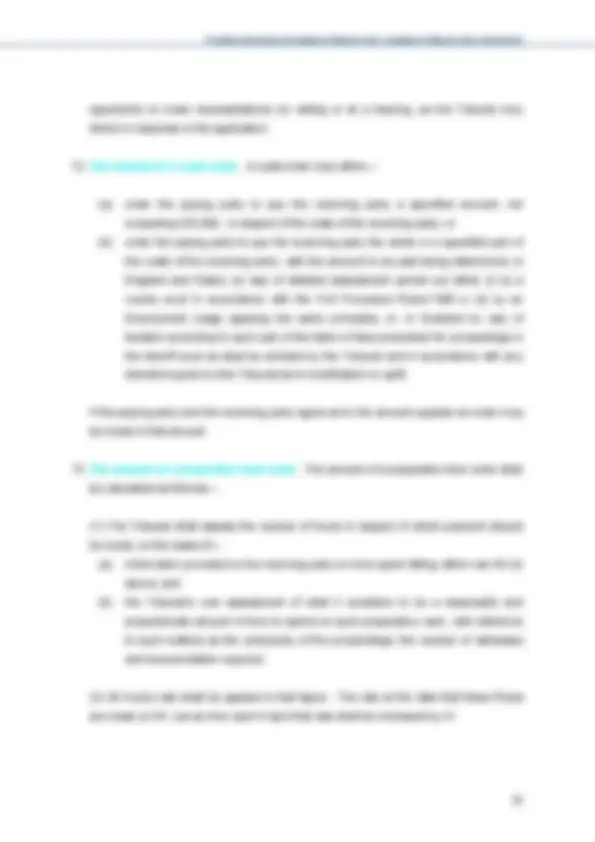
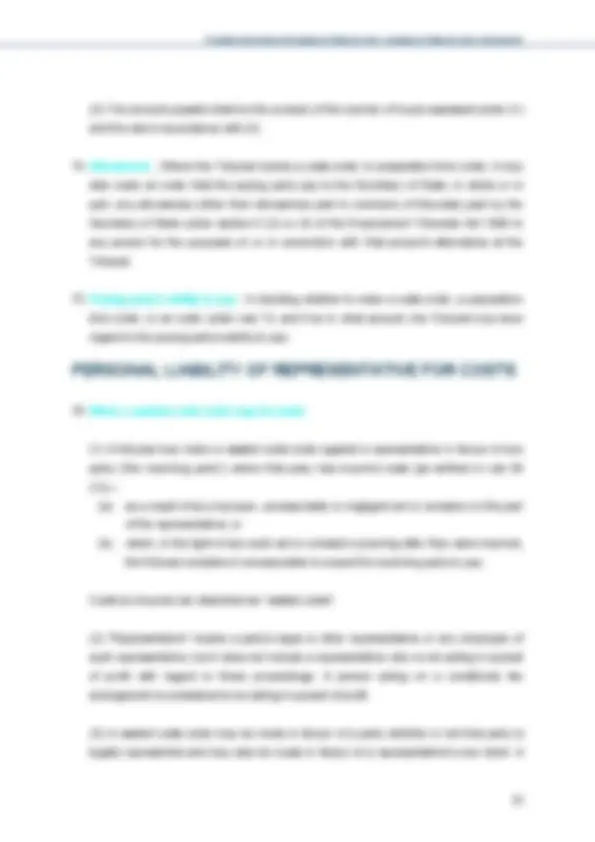
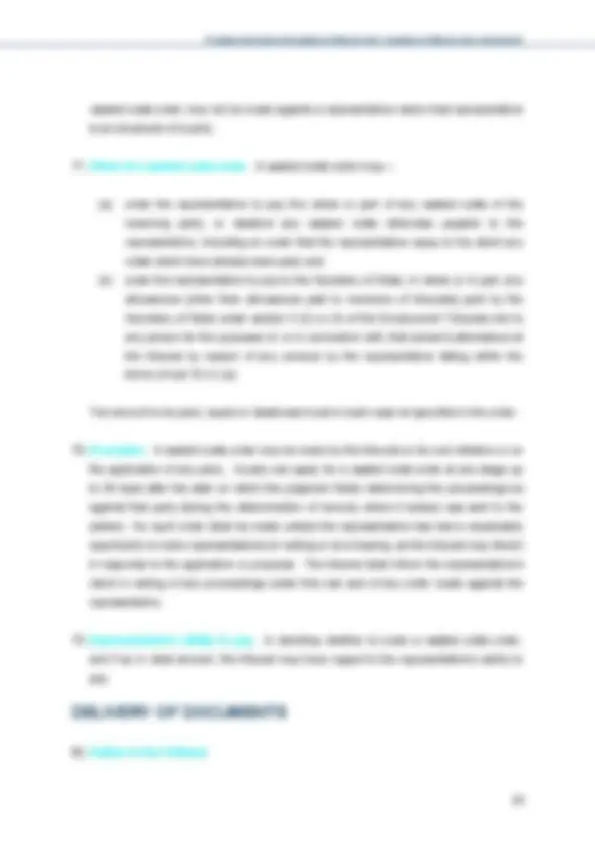
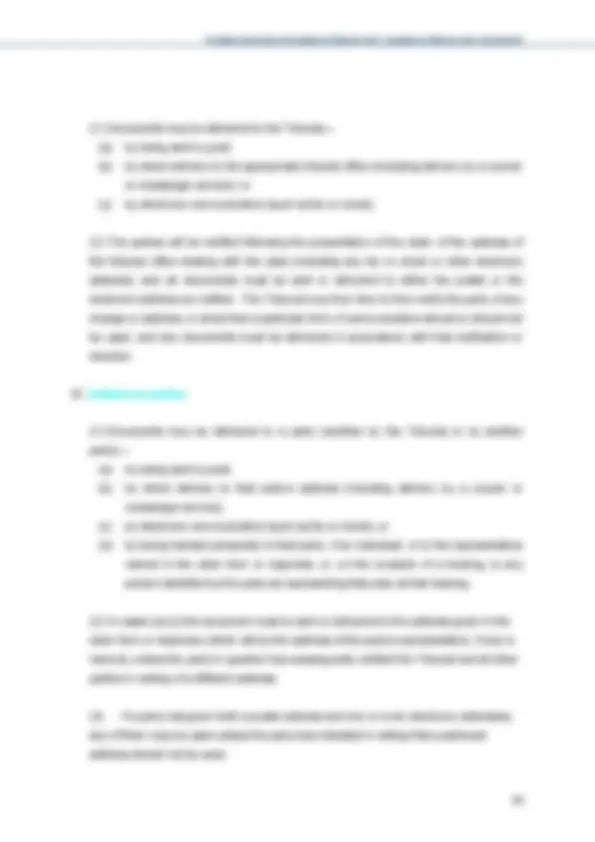
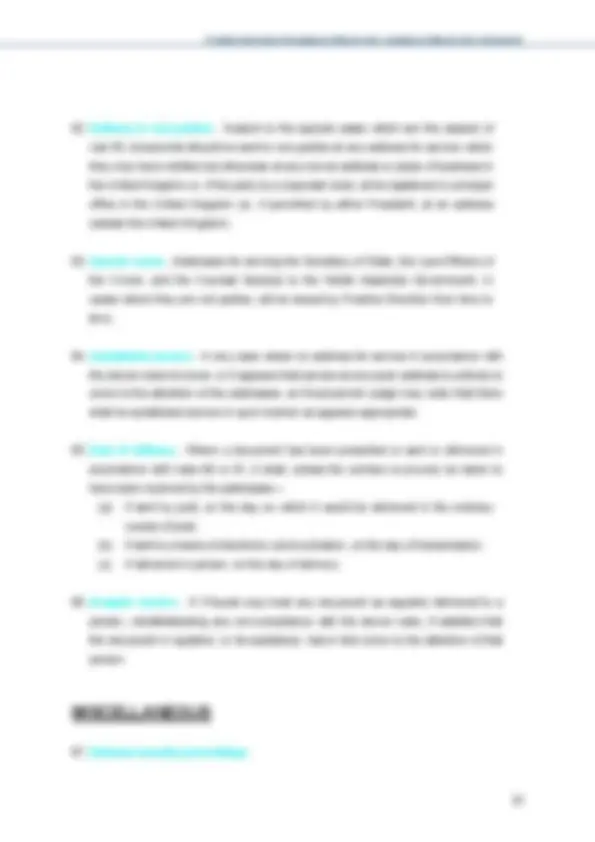
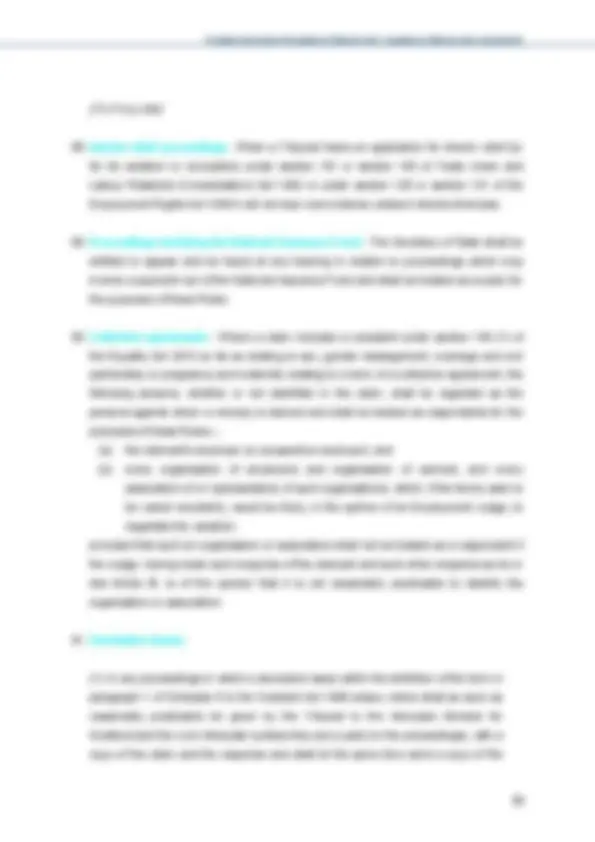
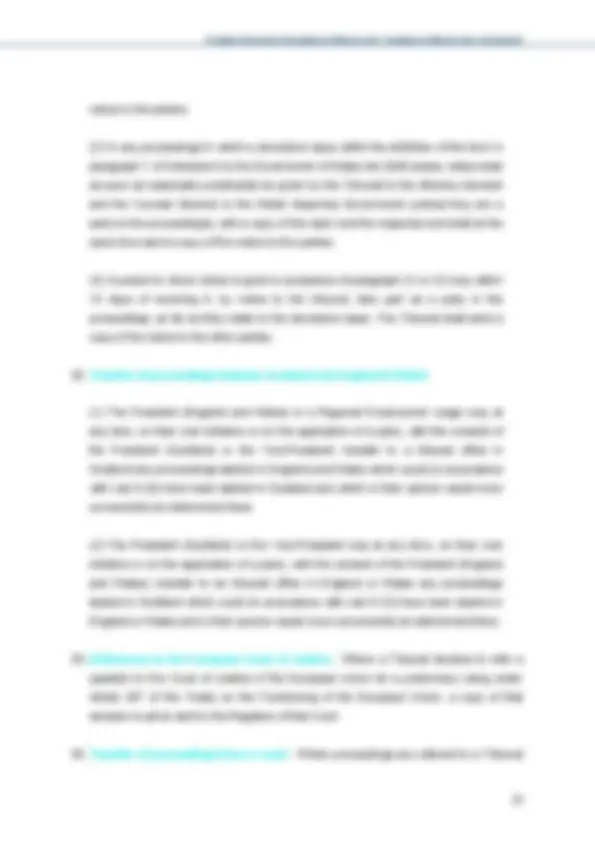
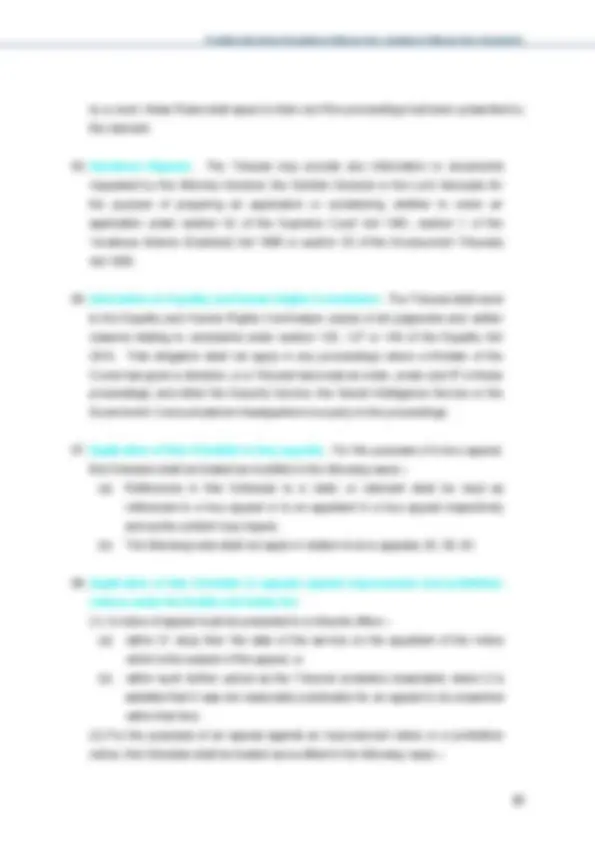
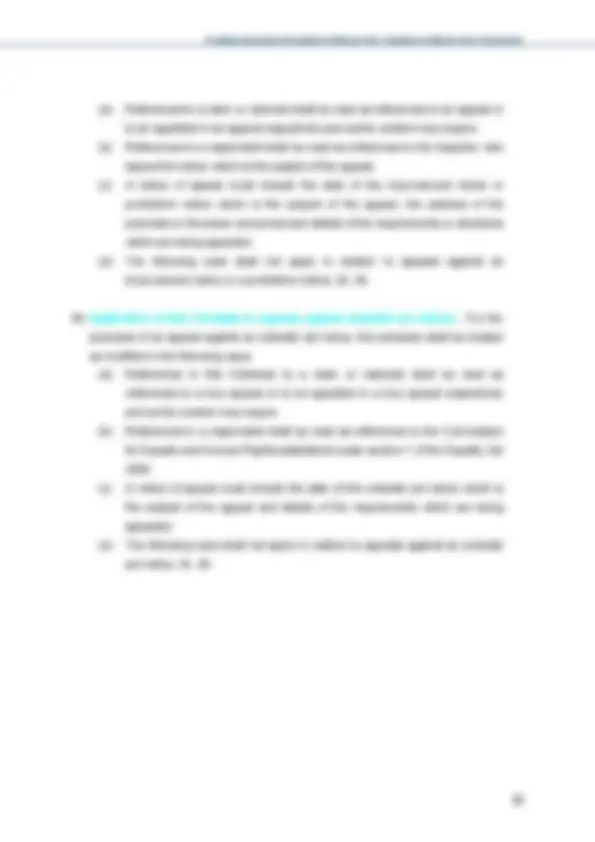
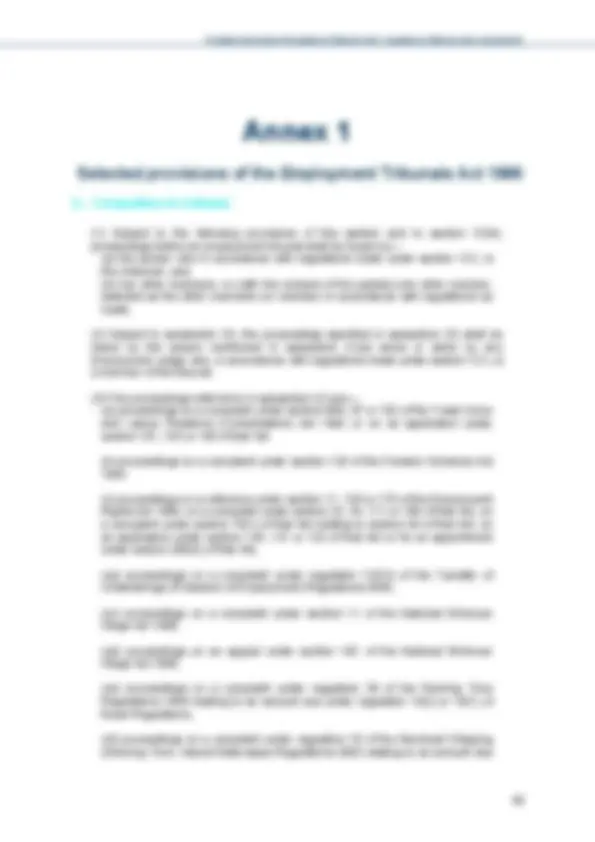
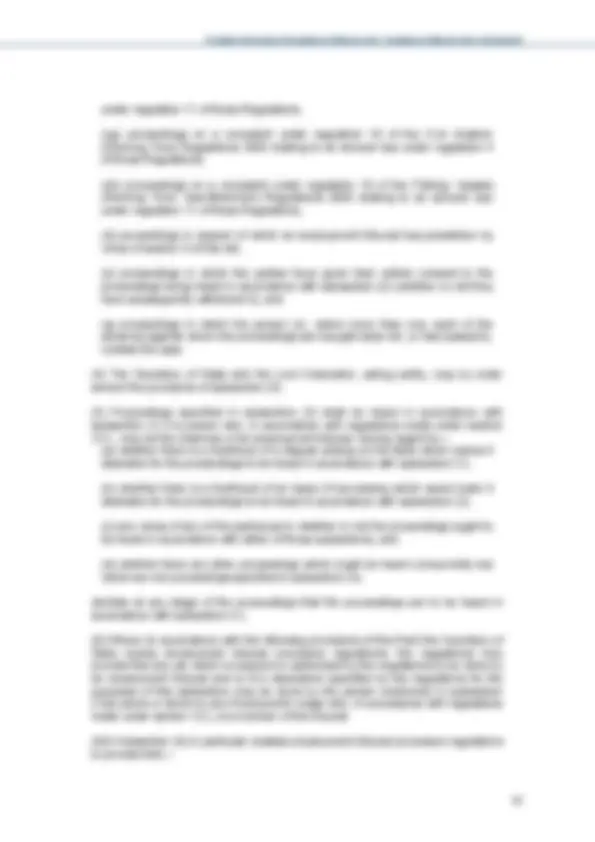
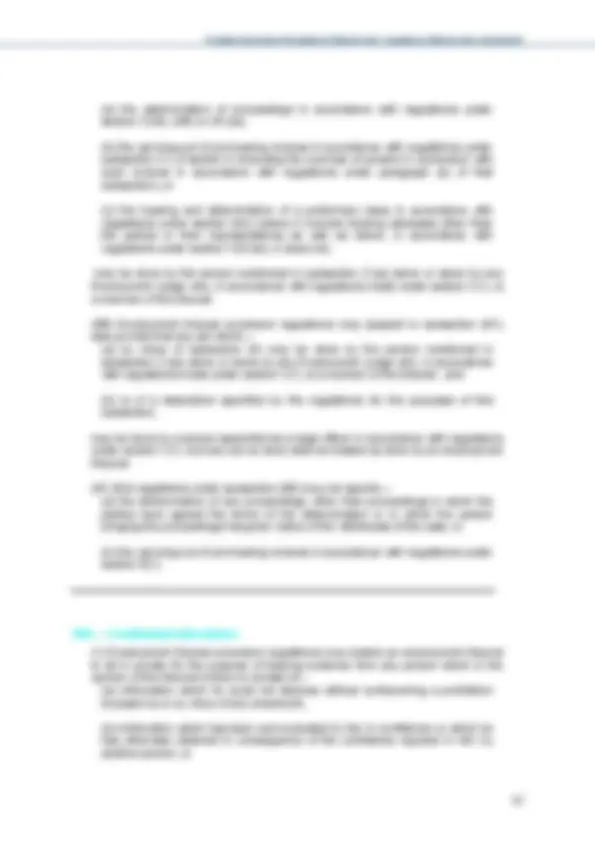
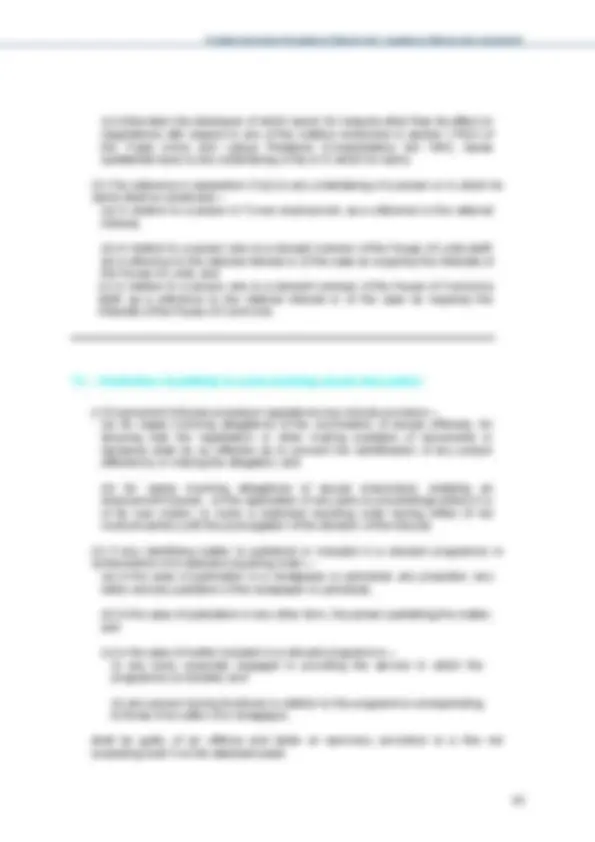
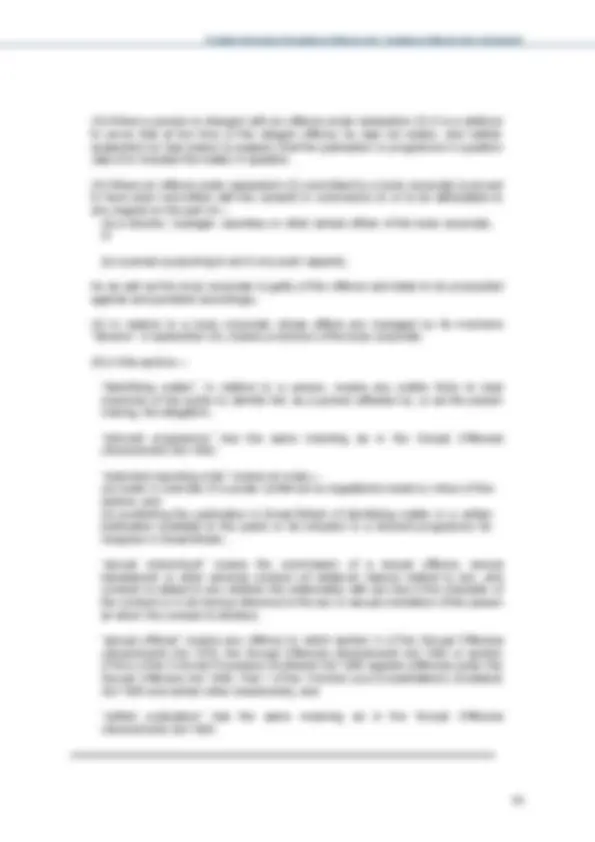
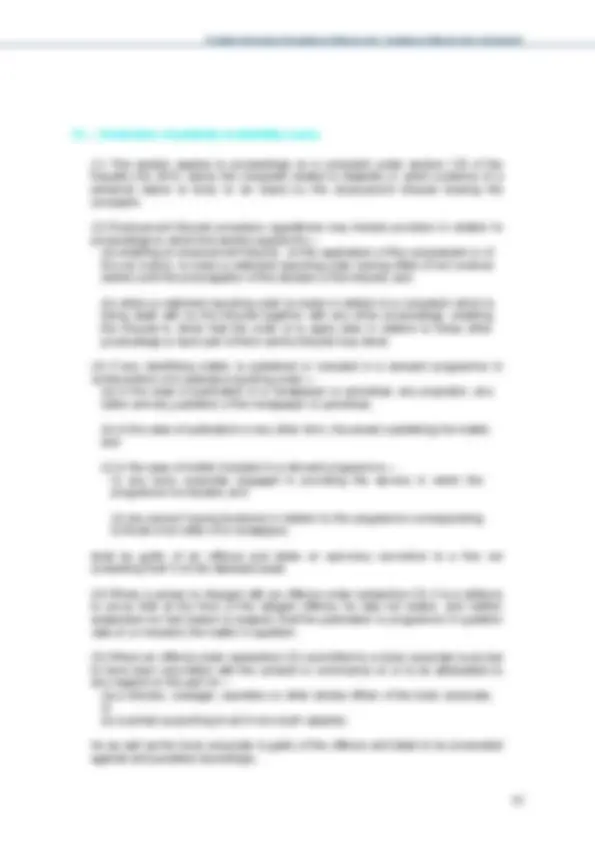



Study with the several resources on Docsity

Earn points by helping other students or get them with a premium plan


Prepare for your exams
Study with the several resources on Docsity

Earn points to download
Earn points by helping other students or get them with a premium plan
Community
Ask the community for help and clear up your study doubts
Discover the best universities in your country according to Docsity users
Free resources
Download our free guides on studying techniques, anxiety management strategies, and thesis advice from Docsity tutors
The interpretation of key terms used in the Employment Tribunal Rules of Procedure. It also outlines the decisions the Tribunal can make, including orders for private hearings, anonymisation, and restricted reporting. The document also covers the circumstances under which proceedings are heard in accordance with subsection (1) or (2).
What you will learn
Typology: Slides
1 / 47

This page cannot be seen from the preview
Don't miss anything!








































A Tribunal shall seek to give effect to the overriding objective in interpreting, or exercising any power given to it by, these Rules. The parties shall assist the Tribunal to further the overriding objective and shall co-operate generally.
(1) In these Rules—
“Acas” means the Advisory, Conciliation and Arbitration Service referred to in section 247 of the Trade Union and Labour Relations (Consolidation) Act 1992;
“claim” means any proceedings before an Employment Tribunal making a complaint or complaints;
“claimant” means the person or persons bringing the claim;
“complaint” means anything that is referred to in the relevant legislation as a claim, complaint, reference, application or appeal;
“Convention rights” has the same meaning as in section 1 of the Human Rights Act 1998;
“electronic communication” has the meaning given to it by section 15(1) of the Electronic Communications Act 2000;
“employee’s contract claim” means a claim brought by an employee in accordance with articles 3 and 7 of the Employment Tribunals Extension of Jurisdiction (England and Wales) Order 1990 or articles 3 and 7 of the Employment Tribunals Extension of Jurisdiction (Scotland) Order 1990;
“employer’s contract claim” means a claim brought by an employer in accordance with articles 4 and 8 of the Employment Tribunals Extension of Jurisdiction (England and Wales) Order 1990 or articles 4 and 8 of the Employment Tribunals Extension of Jurisdiction (Scotland) Order 1990;
“Employment Judge” or “Judge” means an Employment Judge within the meaning of section 3A of the Employment Tribunals Act 1996;
“Employment Tribunal” or “Tribunal” means an employment tribunal established in accordance with regulation #, and in relation to any proceedings means the tribunal responsible for the proceedings in question;
“full tribunal” means a Tribunal constituted in accordance with section 4 (1) of the Employment Tribunals Act 1996;
“Health and Safety Act” means the Health and Safety at Work etc. Act 1974;
“improvement notice” means a notice under section 21 of the Health and Safety Act;
“writing” includes writing delivered by means of electronic communication.
(2) Any reference in the Rules to a Tribunal applies to both a full tribunal and to an Employment Judge acting alone (in accordance with section 4 (2) or (6) of the Employment Tribunals Act 1996).
(3) Orders and other decisions of the Tribunal may be variously described, as seems most appropriate to the Employment Judge, but in these Rules the following terms have specific meanings—
“case management direction” means an order or decision of any kind in relation to the conduct of proceedings but does not include the determination of any substantive issue;
“judgment” means any decision which finally determines a claim, or part of a claim, as regards either liability, remedy or costs (including preparation time and wasted costs) or any issue which is capable of finally disposing of any such claim, even if it will not necessarily do so (for example, an issue whether a claim should be struck out or a jurisdictional issue), whether made at a preliminary hearing or a final hearing (but not including any decision under rules 12 or 18).
(4) Where these Rules refer to the Tribunal carrying out administrative rather than judicial functions, those functions will be performed by the staff of the relevant tribunal office.
(1) An act required by these Rules or by any order of a Tribunal to be done on or by a particular day must be done before 5pm on that day.
(2) If the time specified by these Rules, a practice direction or a direction for doing any act ends on a day other than a working day, the act is done in time if it is done on the next working day. “Working day” means any day except a Saturday or Sunday, Christmas Day, Good Friday or a bank holiday under section 1 of the Banking and Financial Dealings Act 1971.
(3) Where any act must or may be done within a certain number of days of or from an event, the date of that event shall not be included in the calculation. (For example, a response must be presented within 28 days of the date on which the respondent was sent a copy of the claim: if the claim was sent on 1st October the last day for presentation of the response is 29th October.)
(4) Where any act must or may be done not less than a certain number of days before or after an event, the date of that event shall not be included in the calculation. (For example, if a party wishes to present representations in writing for consideration by a Tribunal at a hearing, they must be presented not less than 7 days before the hearing: if the hearing is fixed for 8th October, the representations must be submitted no later than 1st October.)
(5) Where the Tribunal imposes a time limit for doing any act, the last date for compliance shall, wherever practicable, be expressed as a calendar date.
(6) Where time is specified by reference to the date when a document is sent to a person by the Tribunal, the date when the document was sent shall, unless the contrary is proved, be regarded as the date endorsed on the document as the date of sending or, if there is no such endorsement, the date shown on the letter accompanying the document.
The form will be returned to the claimant with a notice of rejection explaining why it has been rejected. The notice should also contain information about how to apply for a reconsideration.
The form will be returned to the claimant together with a notice of rejection giving the Judge’s reasons for deciding that the claim, or part of it, should be rejected and enclosing a fresh claim form. The notice should also contain information about how to apply for a reconsideration.
The form will be returned to the respondent with a notice of rejection explaining why it has been rejected and enclosing a fresh response form. The notice should explain what steps may be taken by the respondent, including the need (if appropriate) to apply for an extension of time, and how to apply for a reconsideration.
(a) An Employment Judge will decide whether on the available material (which may include further information which the parties are required by the Judge to provide), a determination can properly be made on the claim, or part of it. To the extent that it can the Judge will issue a judgment accordingly. Otherwise, a hearing will be fixed before an Employment Judge alone; (b) The respondent will be entitled to notice of any hearings and decisions of the Tribunal but, unless and until an extension of time is granted, will only be entitled to participate in any hearing to the extent permitted by the Employment Judge.
(1) If the Employment Judge considers either that the Tribunal has no jurisdiction to consider the claim, or part of it, or that the claim, or part of it, has no reasonable prospect of success, the Tribunal will send a notice to the claimant— (a) setting out the Judge’s view and the reasons for it; and (b) ordering that the claim, or the part in question, will stand dismissed on such date as is specified in the notice unless before that date the claimant has presented a written request for a hearing.
(2) If no request for a hearing is received, the claim will stand dismissed from the date specified without further order (although the Tribunal will write to the parties to confirm what has occurred). If such a request is received within the specified time a hearing will be fixed for the purpose of deciding whether the claim, or part of it, should be permitted
to proceed. The respondent may, but need not, attend and participate in the hearing. If any part of the claim is permitted to proceed the Employment Judge will give case management directions.
(1) If the Employment Judge considers that the response to the claim, or part of it, has no reasonable prospect of success the Tribunal will send a notice to the respondent— (a) setting out the Judge’s view and the reasons for it; (b) ordering that the response, or the relevant part of it, will stand dismissed with effect from the date specified unless before that date the respondent presents a written request for a hearing; and (c) specifying the consequences of the dismissal of the response, in accordance with (3) below.
(2) If no request for a hearing is received, the response will stand dismissed from the date specified without further order (although the Tribunal will write to confirm what has occurred). If such a request is received within the specified time, a hearing will be fixed for the purpose of deciding whether the response, or any part of it, has a reasonable prospect of success. The claimant may, but need not, attend and participate in the hearing. If any part of the response is permitted to proceed the Employment Judge will give case management directions.
(3) Where a response is dismissed, the consequences will be as if no response had been presented, as set out in rule 20 above.
(2) When the Tribunal makes a decision in respect of the common or related issues it must send a copy of that decision to each party in each of the related cases and, subject to paragraph (3), that decision shall be binding on each of those parties.
(3) Within 28 days after the date on which the Tribunal sent a copy of the decision to a party under paragraph (2), that party may apply in writing for a direction that the decision does not apply to, and is not binding on the parties to, a particular related case.
(4) If the lead case or cases are withdrawn before the Tribunal makes a decision in respect of the common or related issues, it must give directions as to— (a) whether another claim or other claims are to be specified as a lead case or lead cases; and (b) whether any direction affecting the related cases should be set aside or varied.
(d) that it has not been actively pursued; (e) that the Tribunal considers that it is no longer possible to have a fair hearing of the claim or response (or the part struck out).
(2) A claim or response may not be struck out unless the party in question has been given the opportunity to make representations, either in writing or, if requested by the party, at a hearing.
(3) Where a response is struck out, the consequences will be as if no response had been presented, as set out in rule 20 above.
(1) If at a preliminary hearing the Tribunal considers that any complaint has little reasonable prospect of success, it may make an order requiring that party (“the paying party”) to pay a deposit not exceeding £1,000 as a condition of continuing to advance that complaint.
(2) The Tribunal must make reasonable enquiries into the paying party's financial means to pay the deposit and must take any such information into account in deciding the amount of the deposit.